
Motocross history is filled with examples of creative ideas that were heralded as ground-breaking, but, because of the rapid rate of change in development, sank into the swamp of forgotten technology. Although some are best left abandoned, others were truly innovative—if not ultimately successful. MXA reveals motocross’ tech trivia. Do you remember these ideas? The wide world of motocross footpegs.
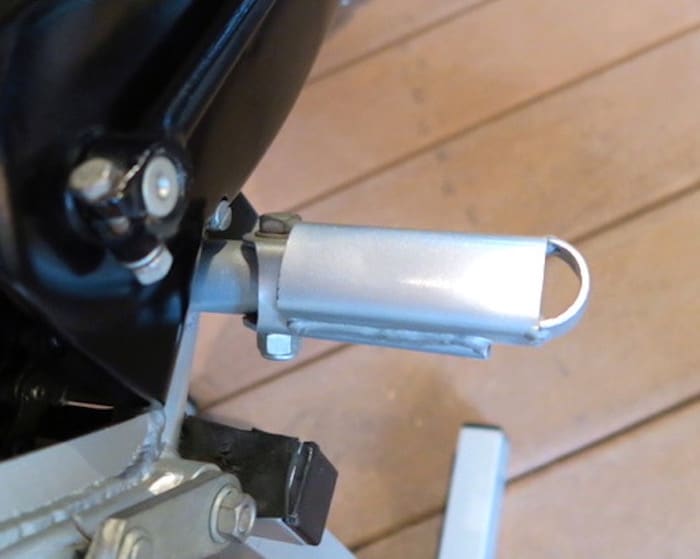
1964 to 1972 smooth Husky pegs.
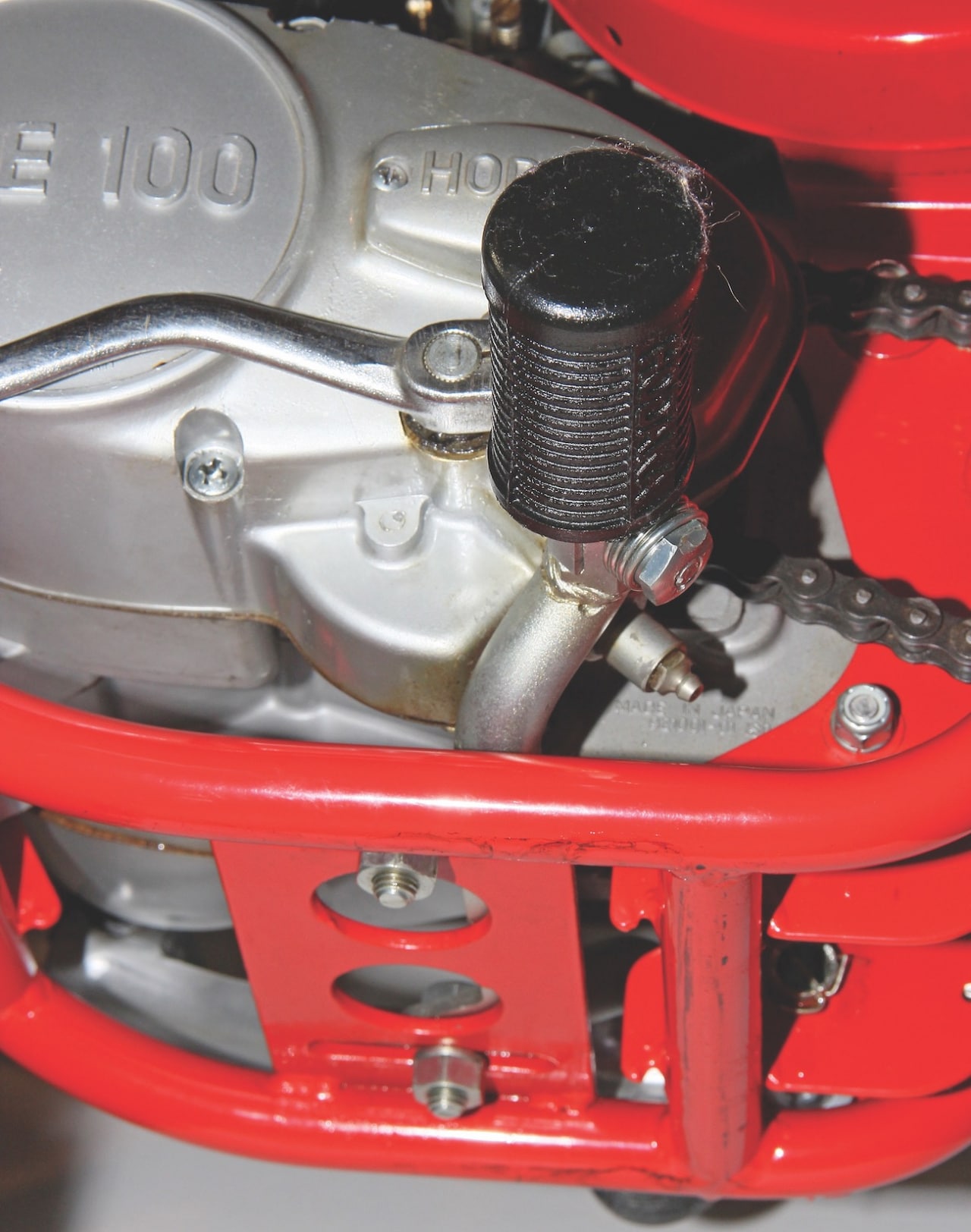
1972 Hodaka rubber-covered pegs that could be adjusted fore and aft by loosening two bolts. In most cases, one footpeg would be forward and the other aft.
 Sten Lundin’s1961 Lito 500 footpegs were very grippy for the time.
Sten Lundin’s1961 Lito 500 footpegs were very grippy for the time.
 Rubber-covered footpegs were common place on production motocross bikes in the late 1960s and early ’70s.
Rubber-covered footpegs were common place on production motocross bikes in the late 1960s and early ’70s.
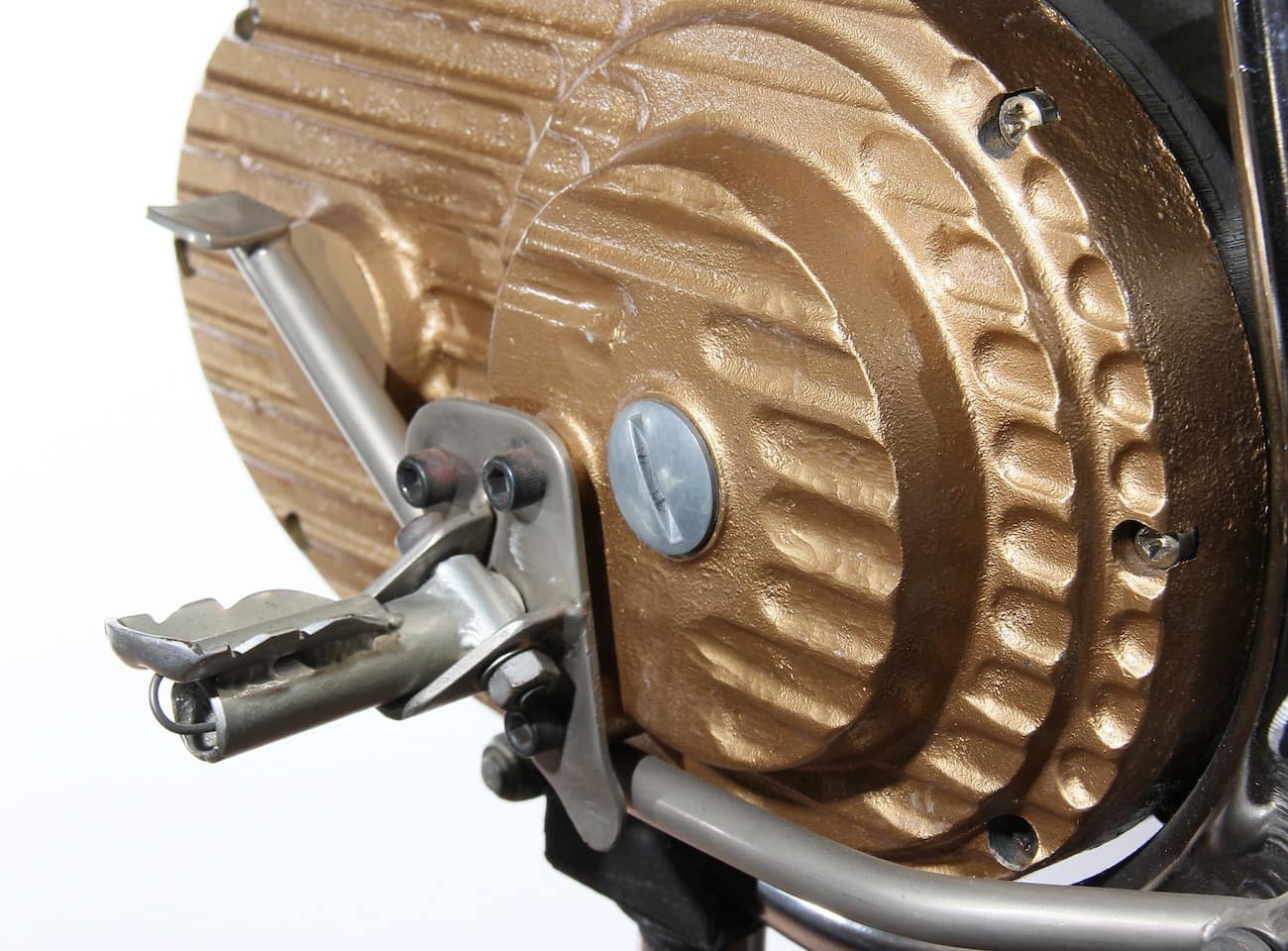 1976 CCM footpeg bolted to the ignition cover.
1976 CCM footpeg bolted to the ignition cover.
The modern footpeg took a long time to get where it is today. Footpegs have gone from flat metal plates to spot-welded bumps to AMA-mandated rubber covers to Hodaka’s sliding bar footpegs to pivoting footpegs and, most exotically, to CCM bolting its footpegs directly on the ignition and clutch covers. Fastway Ankle Saver footpegs.
Fastway Ankle Saver footpegs.
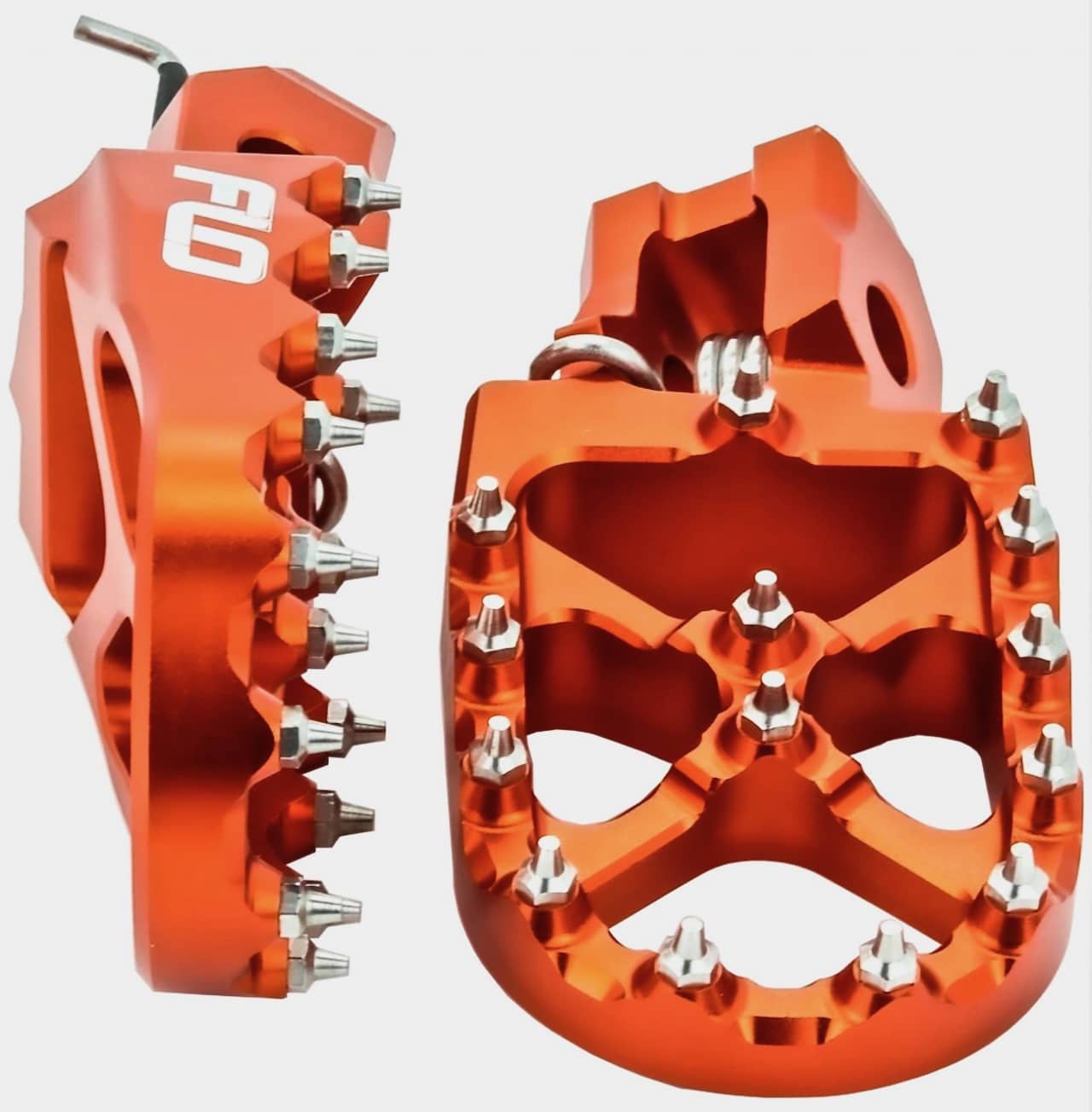 Aluminum Flo footpegs with replaceable teeth.
Aluminum Flo footpegs with replaceable teeth.
With each passing year the width of footpegs has steadily increased. Back in the day the typical motocross peg was 25mm wide. Kawasaki was the first OEM manufacturer to install ultra-wide 40mm footpegs on its bikes, and today the most popular titanium aftermarket pegs are 57mm wide. Anyone betting on 60mm?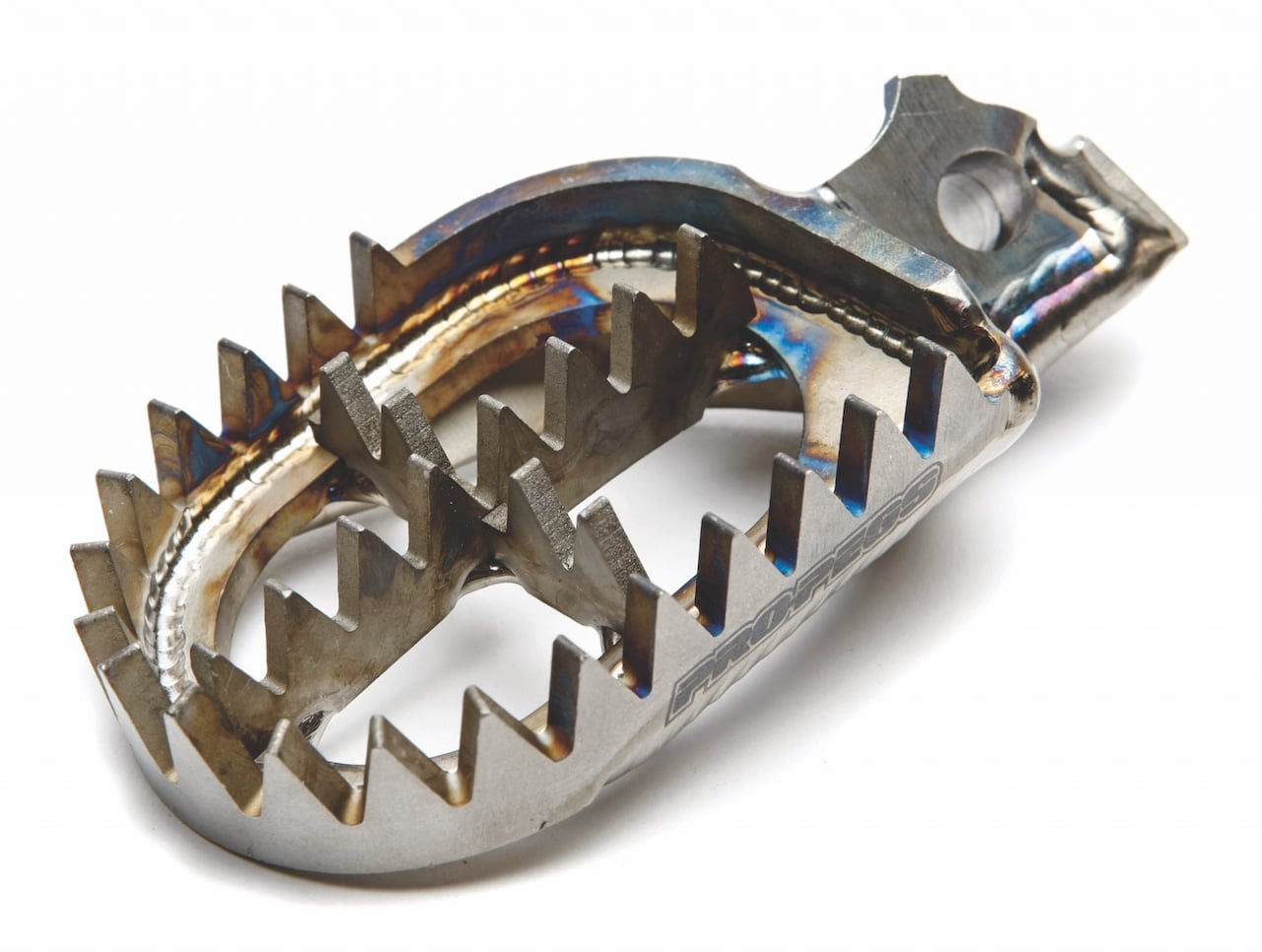 Modern titanium footpegs.
Modern titanium footpegs.
FORGOTTEN MOTOCROSS TECH: WIDE WORLD OF FOOTPEG DEVELOPMENT Motocross Action Magazine.

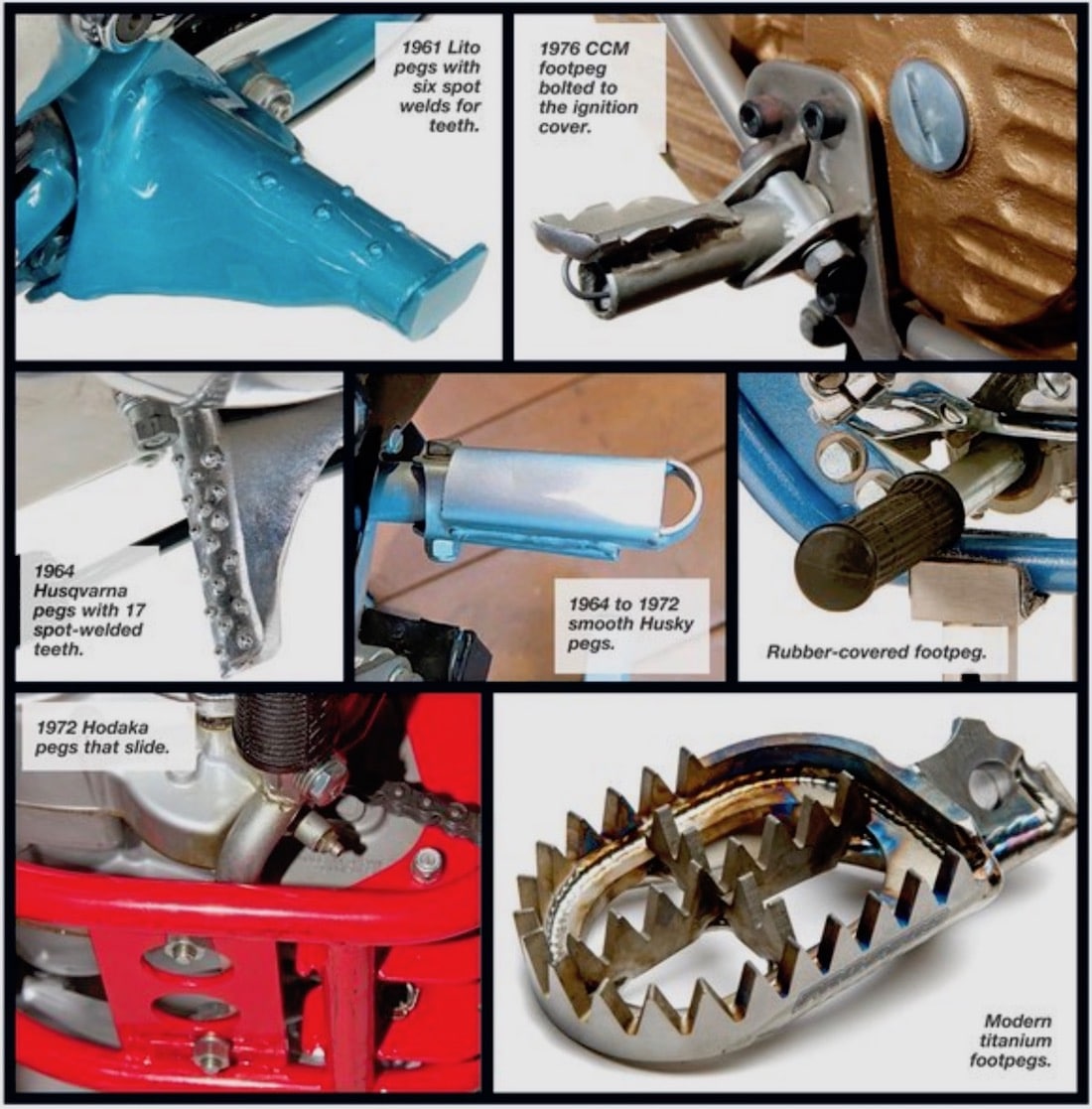
















You must be logged in to post a comment Login